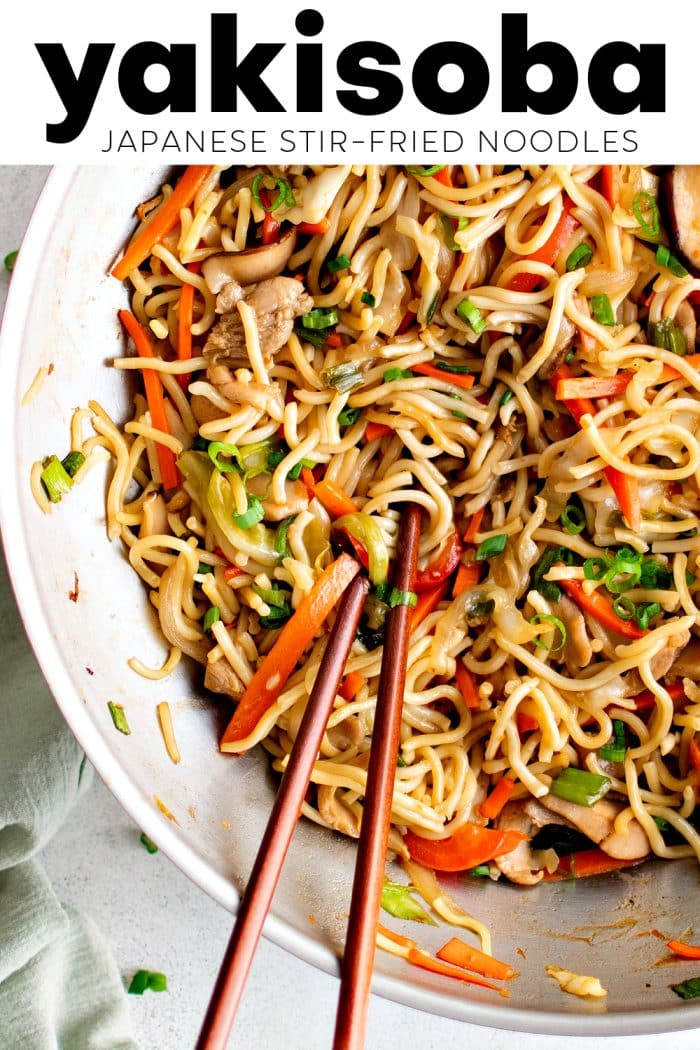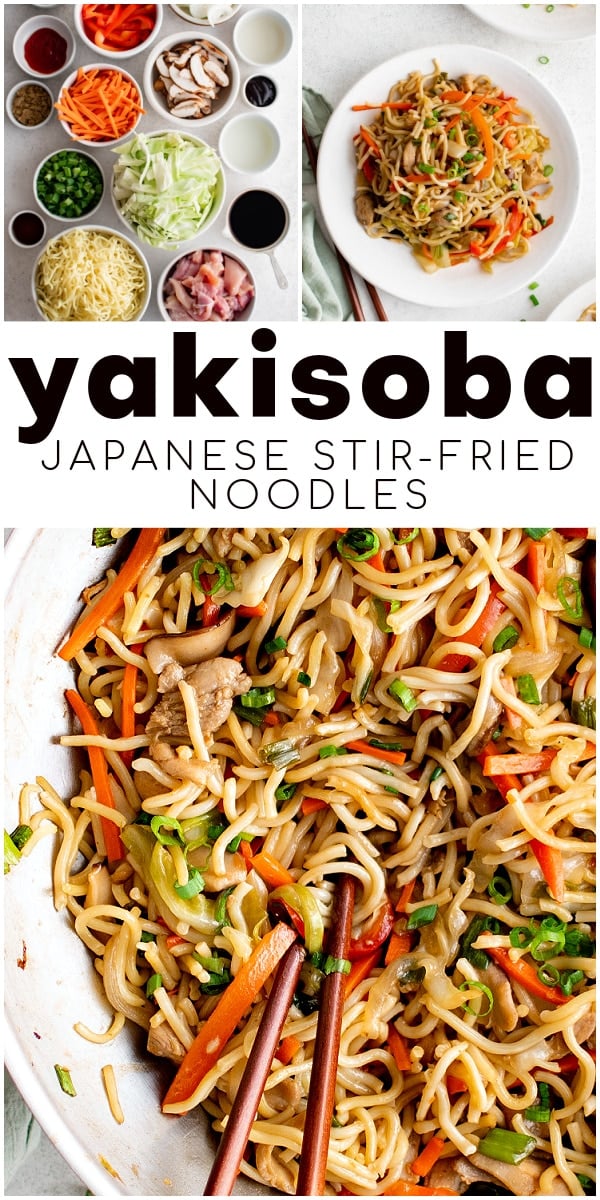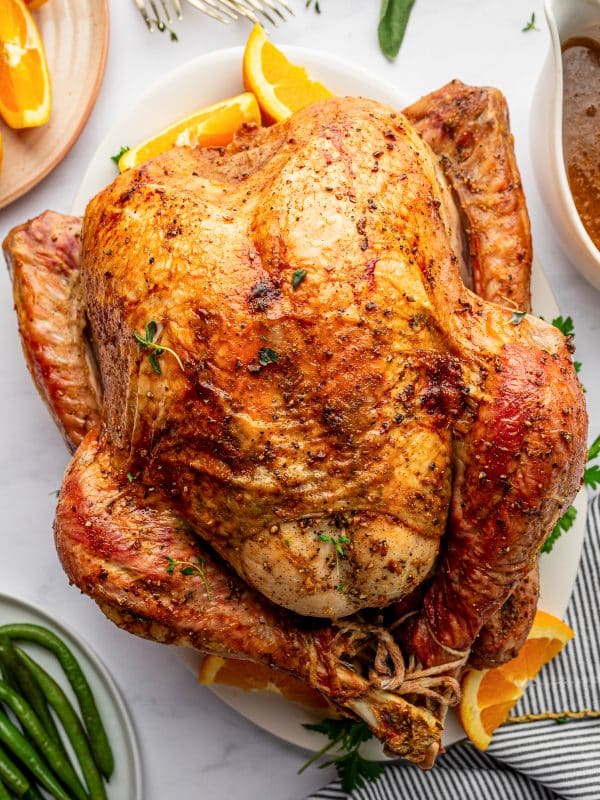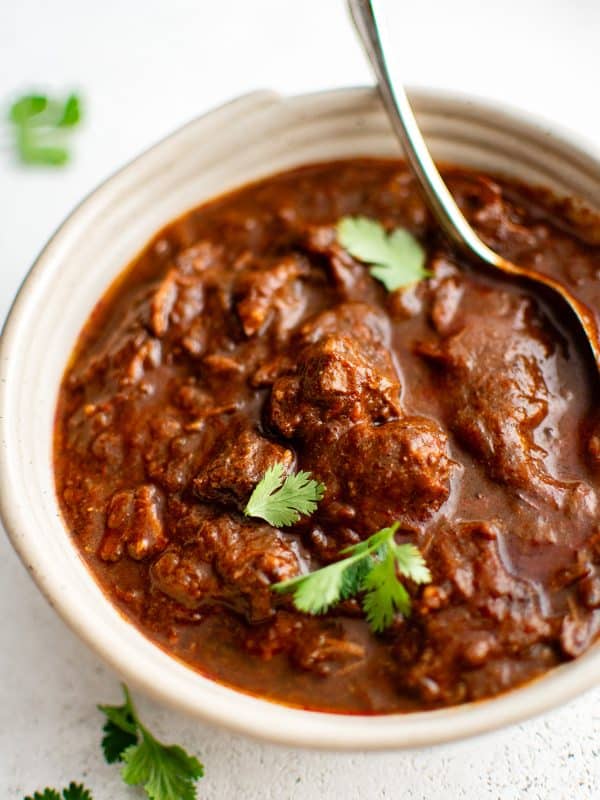This post may contain affiliate links. See my disclosure policy.
Yakisoba is a classic Japanese noodle stir fry seasoned with a mouthwatering sweet and savory yakisoba sauce. Add your favorite protein – shrimp, chicken, or pork – and fill it with veggies like carrots, cabbage, mushrooms, and onions. Super easy to make and loved by the whole family!
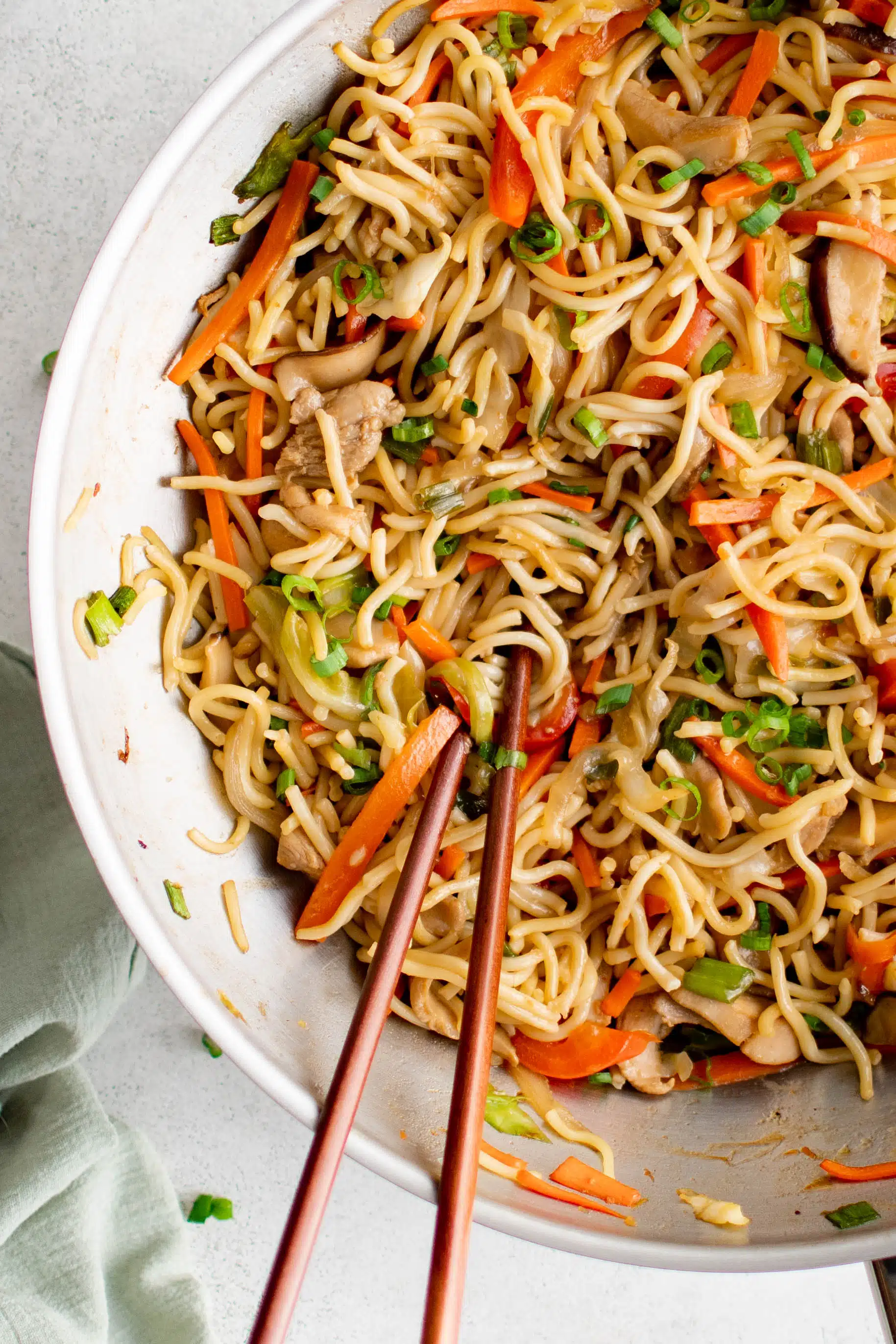
From chow mein to pad Thai to pad see ew, slurpy stir-fried noodles are my favorite and a must-have whenever we order takeout.
Then there’s yakisoba. Unlike other stir-fried noodle dishes, yakisoba is so quick and easy to make at home it doesn’t need to be ordered in and the ingredients can be found in most major grocery stores. It’s flavorful – yet mild – and the whole thing takes less than 30 minutes to cook!
What is Yakisoba?
Yakisoba (焼きそば) is a popular Japanese noodle dish that translates to “fried noodles.” often found at festivals, street stalls, and casual dining settings throughout Japan. It is made by stir-frying wheat-based noodles with a variety of ingredients such as vegetables (e.g., cabbage, onions, carrots, and bean sprouts), protein (e.g., pork, chicken, beef, or tofu), and seasonings. The dish is typically flavored with a sweet and savory sauce made from ingredients like soy sauce, Worcestershire sauce, oyster sauce, and sugar.
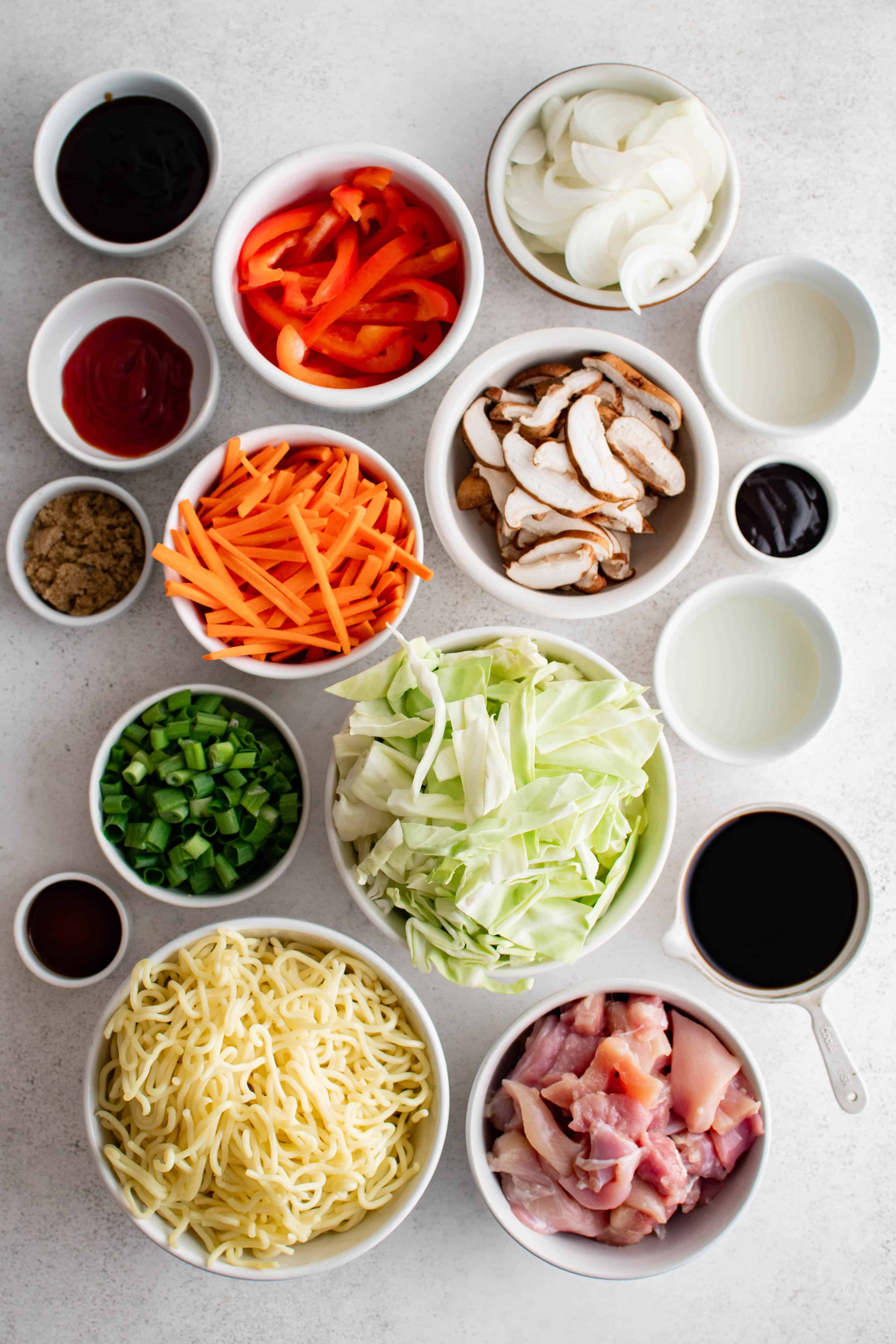
Yakisoba Sauce Ingredients
Yakisoba sauce has a unique, complex flavor combining sweet, savory, tangy, and umami elements.
- Worcestershire Sauce: This forms the base of the sauce and provides a tangy, savory depth of flavor.
- Soy Sauce: This adds an umami flavor and a bit of saltiness to the sauce.
- Oyster Sauce: This contributes to the savory flavor of the sauce.
- Ketchup: This adds a bit of sweetness and a tangy flavor.
- Sugar: This is used to balance out the saltiness of the other ingredients.
- Mirin: This sweet rice wine adds a bit of sweetness and depth of flavor.
- Hoisin Sauce: Aromatic, it has a sweet and salty taste with a hint of garlic and chili.
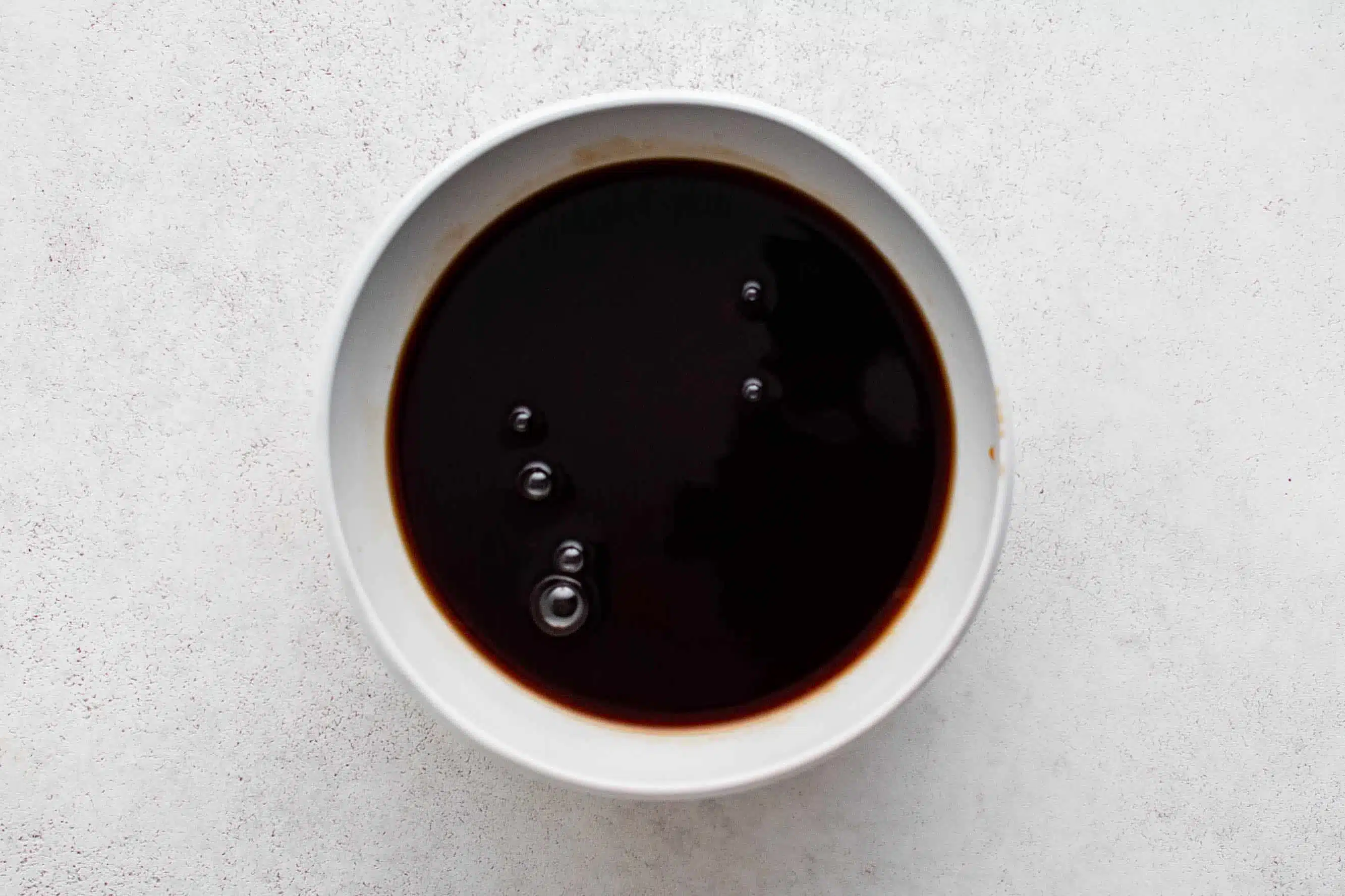
What are Yakisoba Noodles?
Despite its name, yakisoba isn’t made with soba noodles, which are made from buckwheat flour. Instead, Yakisoba is made with Chinese-style noodles made from wheat flour and kansui (an alkaline solution that regulates acidity). Yakisoba noodles are called Mushi Chukamen (蒸し中華麺), also known as Steamed Chinese-style noodles. Thin and round, yellow in color, and somewhat chewy, they’re sold in fresh, dried, or partially cooked (parboiled) forms, and they can be found in many Asian grocery stores or in the international aisle of larger supermarkets. Two of the most popular brands of yakisoba noodles are Myojo (明星) and Maruchan (マルちゃん).
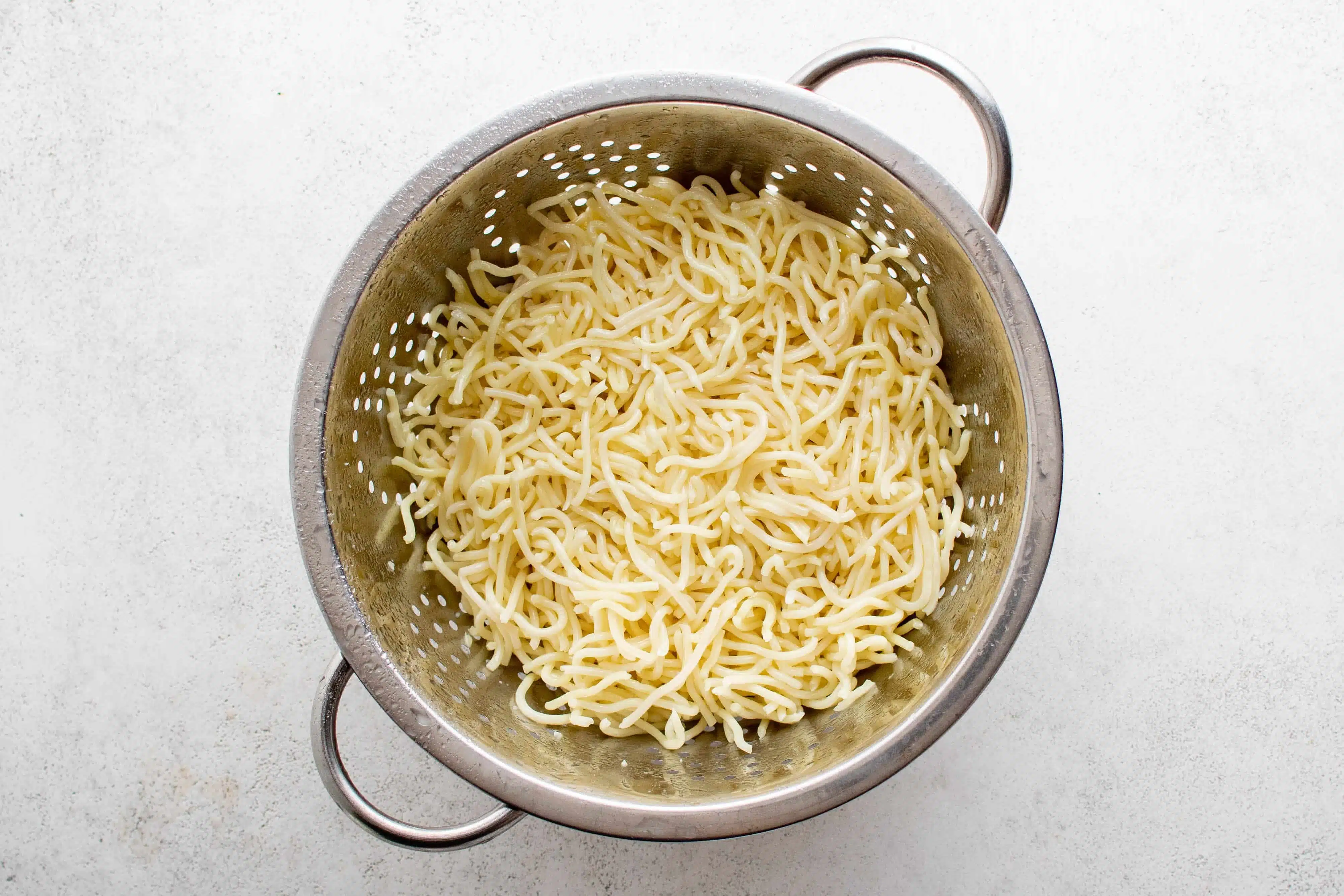
How to Make Yakisoba
1. Combine the yakisoba sauce: In a small bowl, whisk together the soy sauce, oyster sauce, mirin, hoisin sauce, ketchup, brown sugar, and Worcestershire sauce. Set aside.
2. Prepare the noodles: Transfer the yakisoba noodles to a large colander and rinse with water before draining and setting aside.
3. Stir fry the chicken: Cook the chicken in a large wok or skillet set over high heat for about 5-7 minutes. Stir often to ensure even cooking.
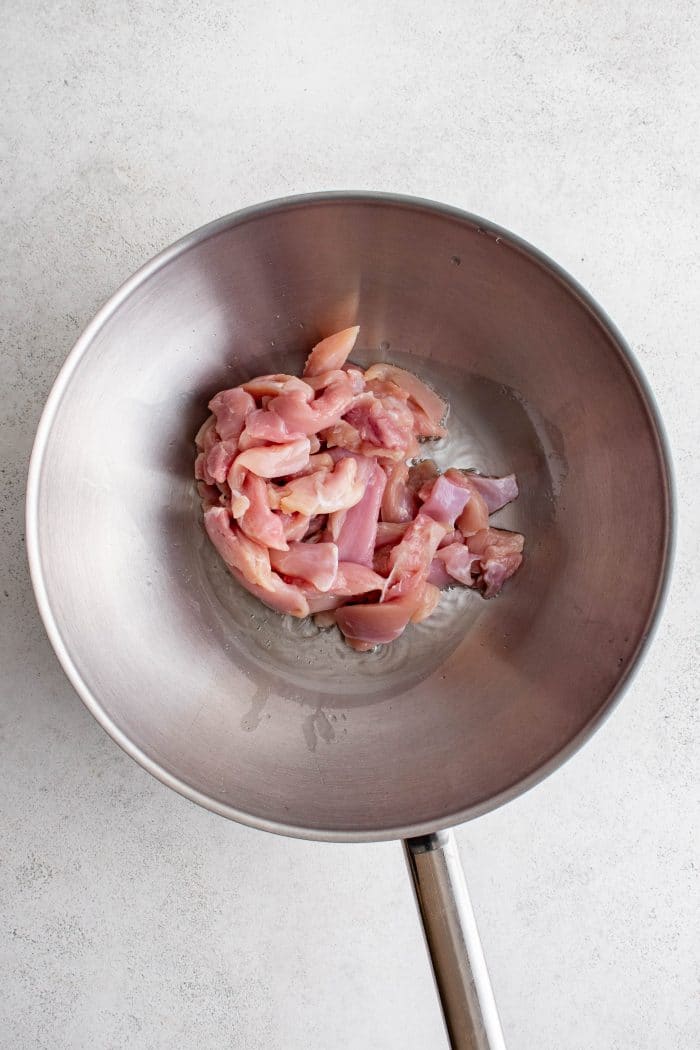
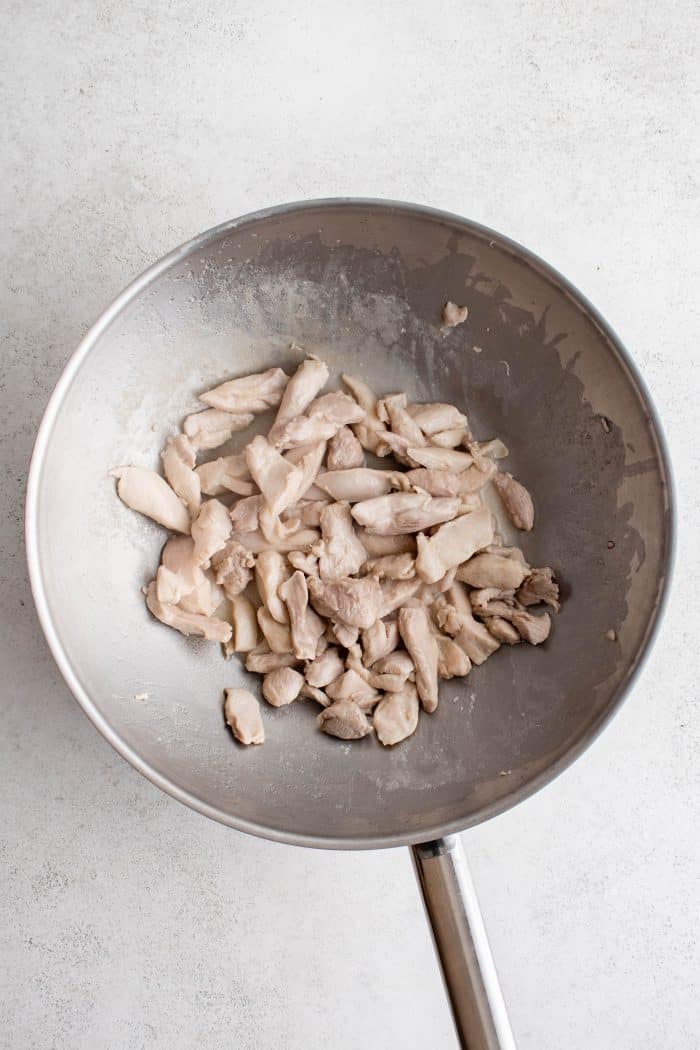
4. Add the carrots, onion, and bell peppers: Typically, when making stir fries, you don’t add all of the vegetables at the same time since some take longer to cook than others. In this case, we’re adding carrots, onion, and bell peppers to the chicken first. Cook for 2-3 minutes, stirring often.
5. Next, add the mushrooms, cabbage, and green onions: Cook just until the cabbage is wilted and the mushrooms start to release their moisture (about 3-4 minutes).
6. Add the noodles and yakisoba sauce: Gently toss to combine the noodles and the vegetables with the sauce until everything is heated through.
7. Garnish: I like to garnish with fresh chopped green onions and sesame seeds.
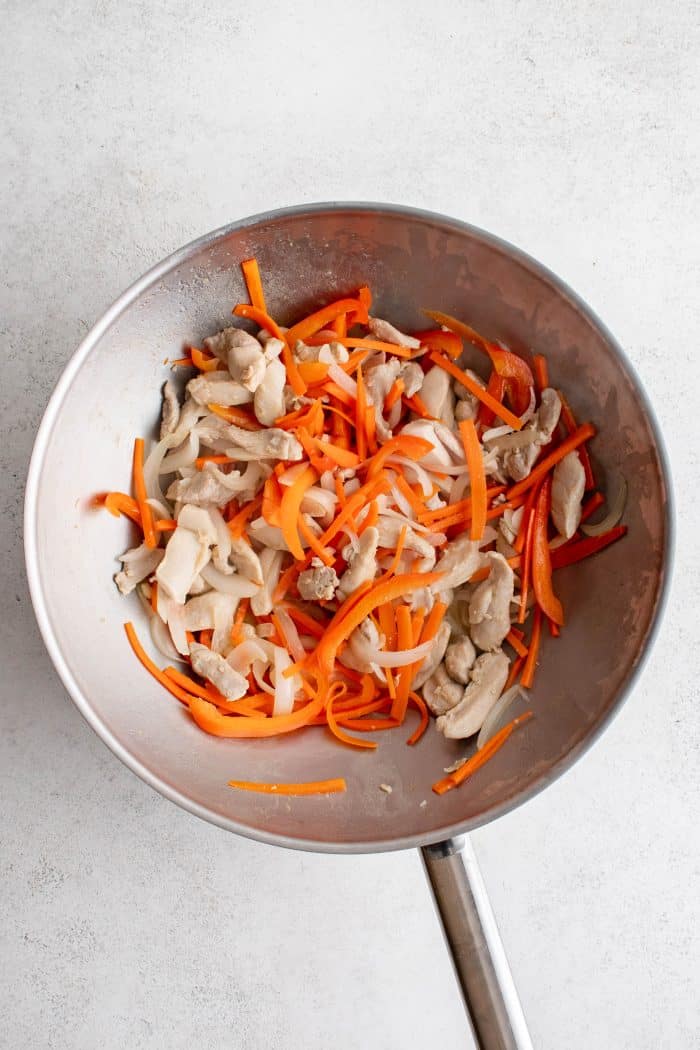
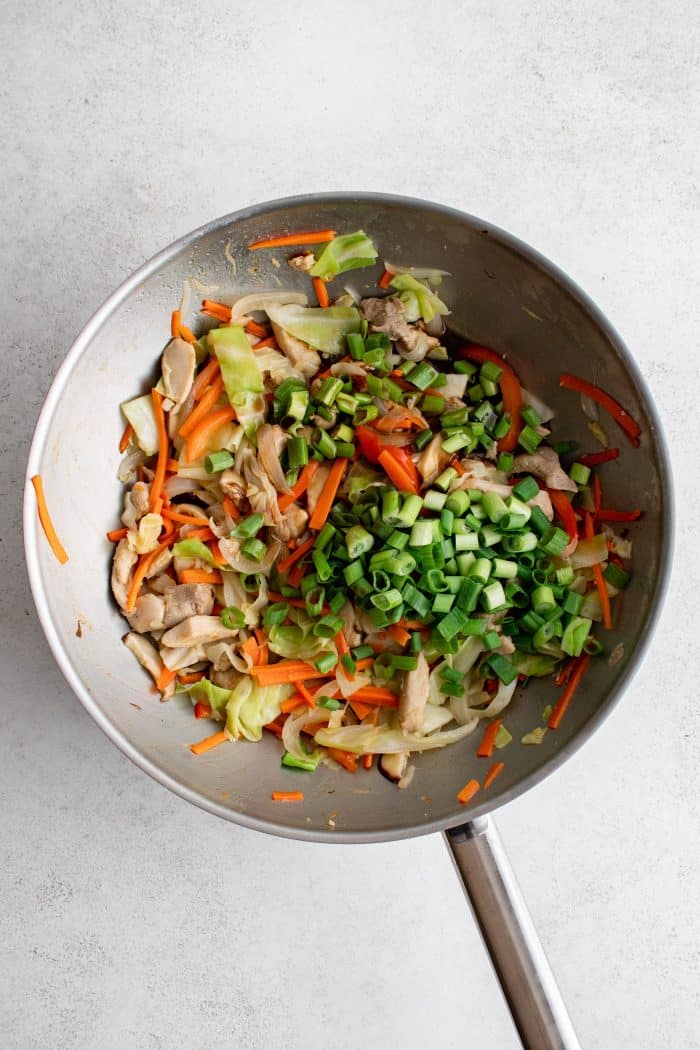
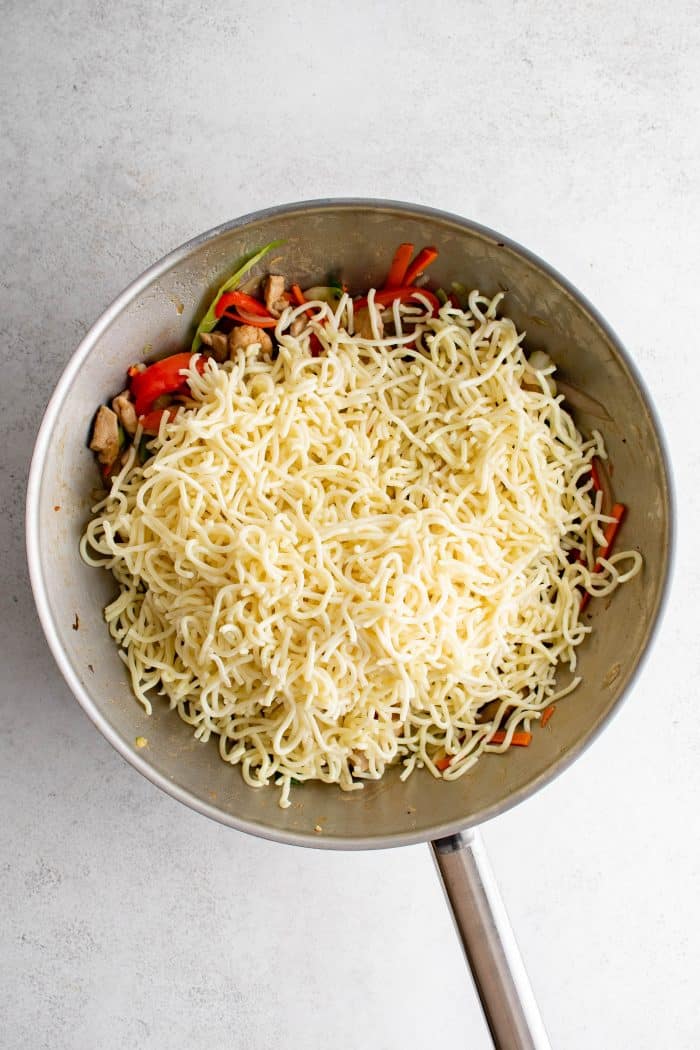
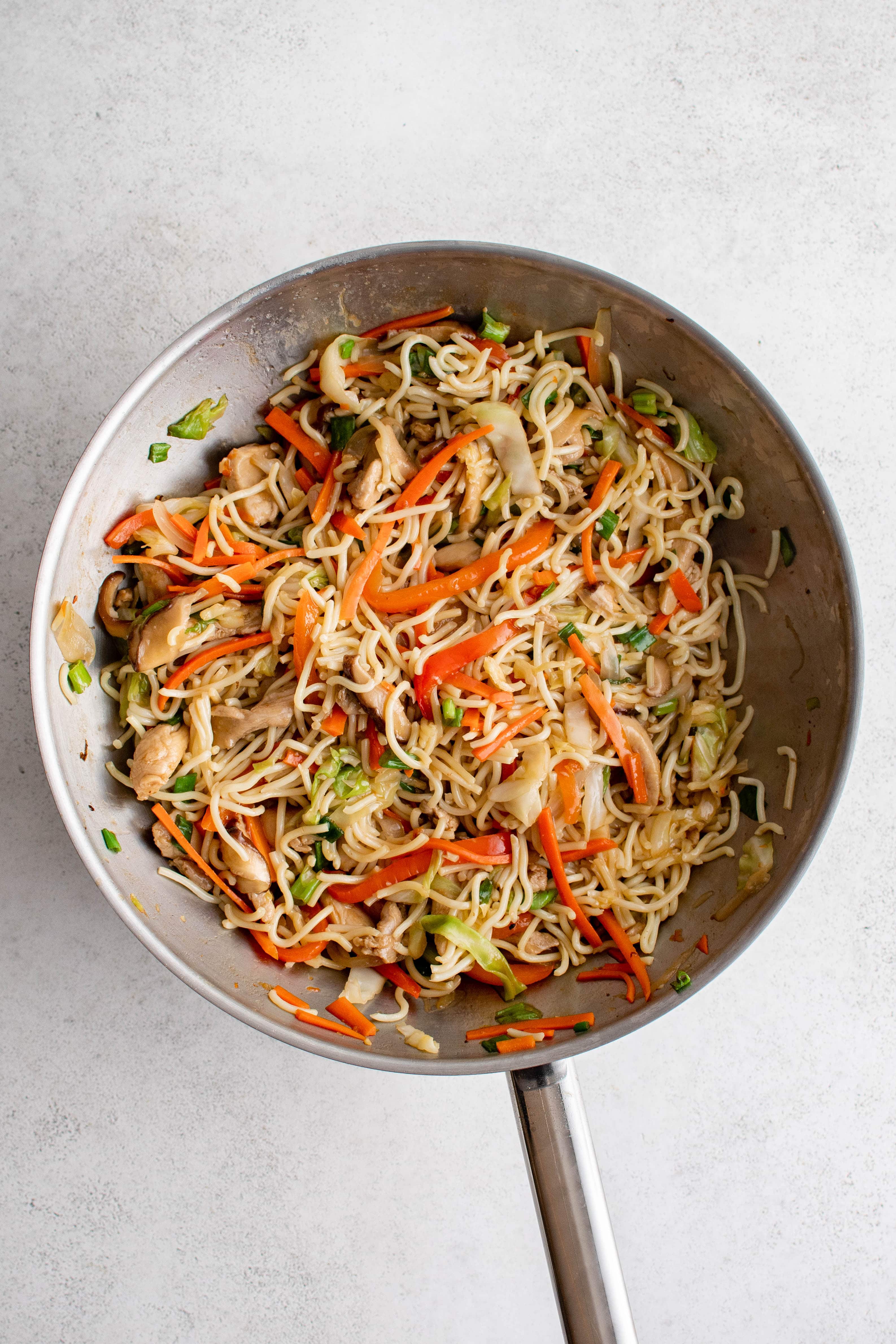
Storage and Freezing
- Leftovers: Transfer leftovers to an airtight container. Keep stored in the refrigerator for up to 3-4 days.
- Freezing: Allow the yakisoba to cool completely before transferring leftovers to a freezer-safe container or bag and place in the freezer for up to 2 months.
- Reheating: You can reheat leftover yakisoba in the microwave or on the stovetop. If it’s frozen, it’s best to thaw it in the refrigerator overnight before reheating.
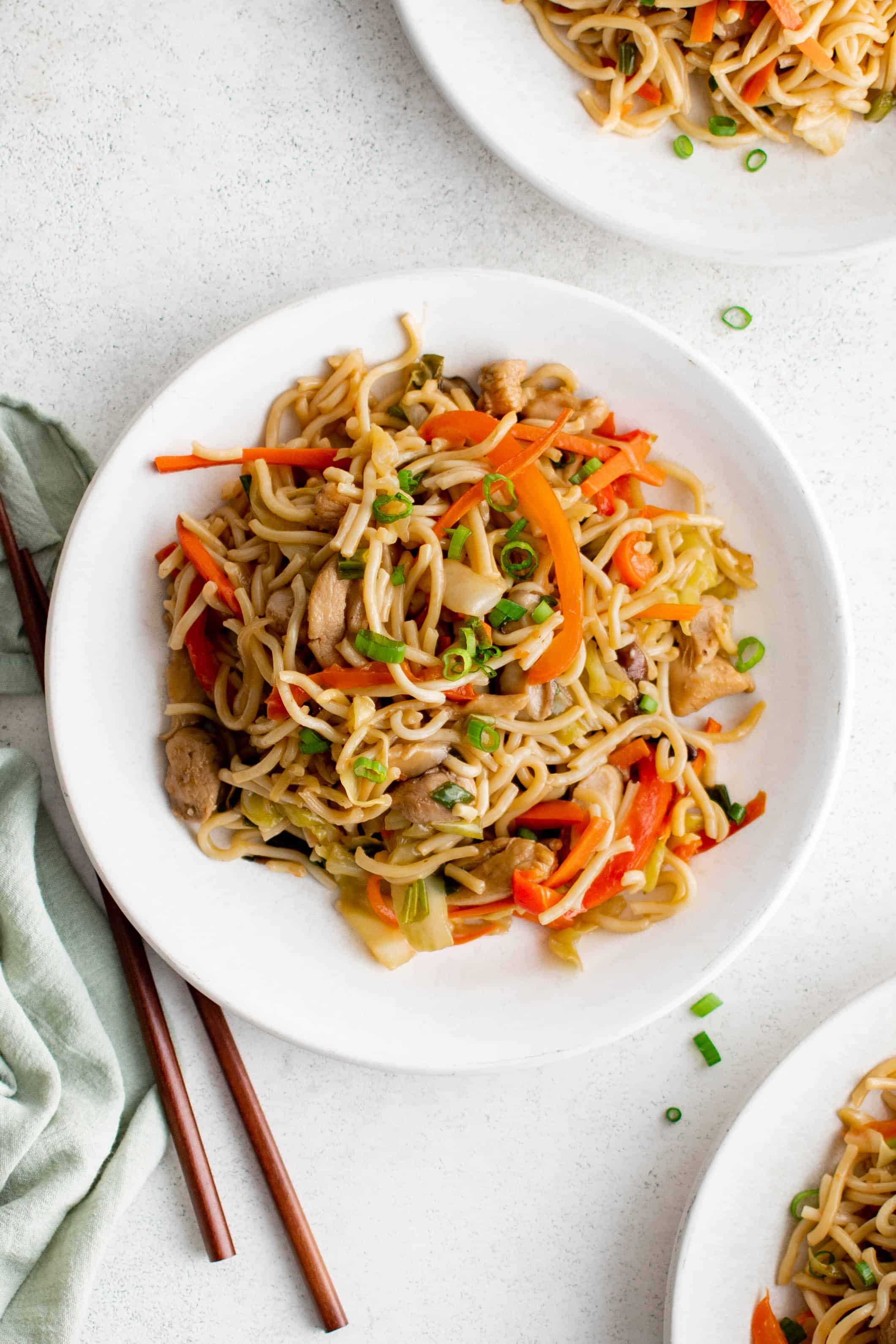
More Asian Recipes:
- Beef and Broccoli Recipe
- Kung Pao Chicken
- Mongolian Beef
- Bok Choy Recipe
- Moo Goo Gai Pan Recipe
- Hunan Chicken
If you try making this Yakisoba Recipe, please leave me a comment and let me know! I always love to hear your thoughts.
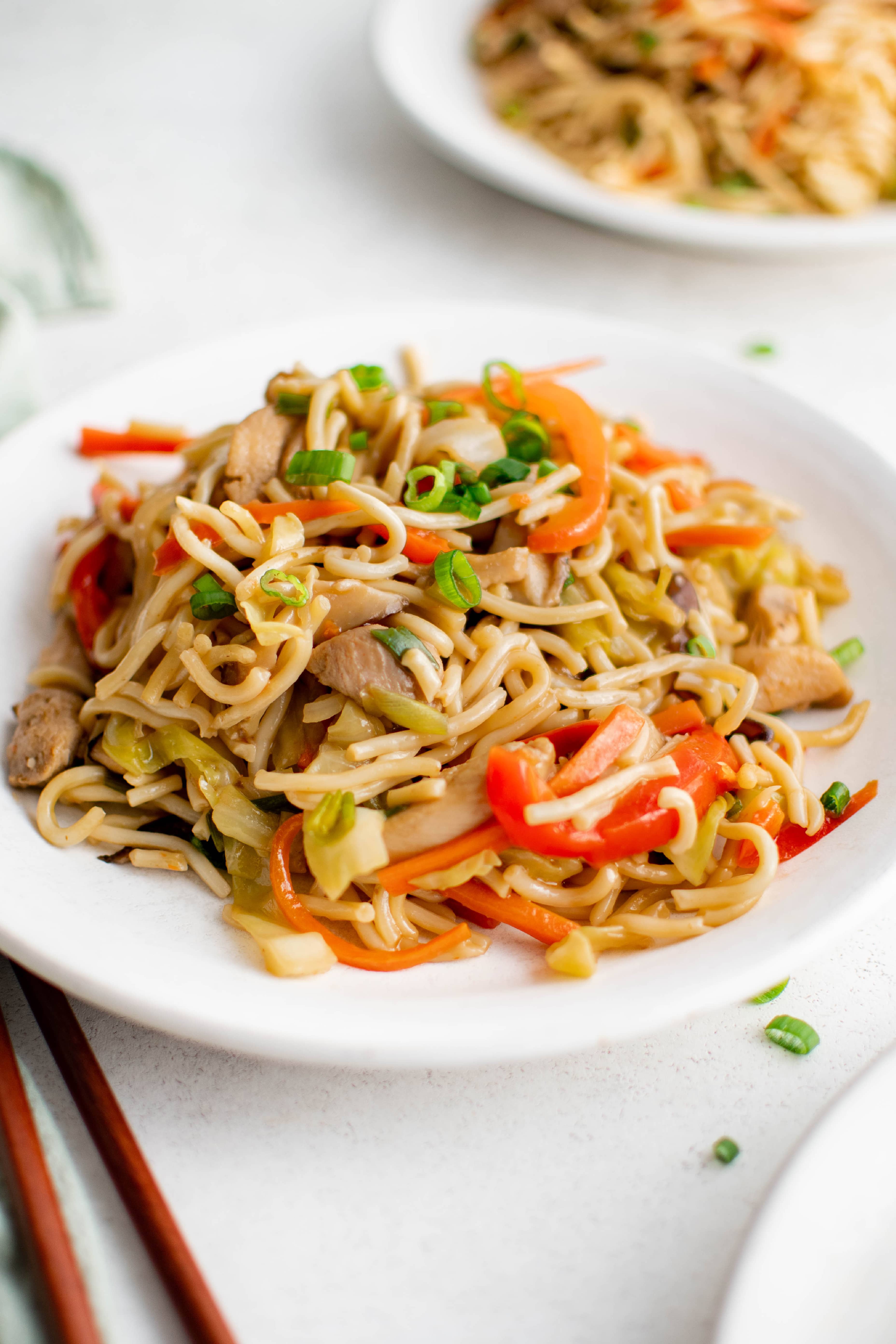

Yakisoba Noodles Recipe
Ingredients
- ½ cup soy sauce
- 2 tablespoon oyster sauce
- 1 tablespoon mirin
- 1 tablespoon hoisin sauce
- 1 tablespoon ketchup
- 2 teaspoon brown sugar
- 1 teaspoon Worcestershire sauce
- 3 servings Yaki-soba Noodles, (one package of pre-steamed noodles contains 3 servings, 16-17 ounces)
- 1 tablespoon vegetable oil
- 1 pound boneless, skinless chicken thighs, thinly sliced into bite-size pieces
- 2 carrots, peeled and julienned
- 1 yellow onion, sliced
- 1 red bell pepper, seeded and thinly sliced
- 3 ounces shiitake mushrooms, sliced
- ¼ green cabbage, cored and sliced
- 1 bunch green onions or scallions, sliced
Instructions
- In a medium bowl, combine the soy sauce, oyster sauce, mirin, hoisin sauce, ketchup, brown sugar, and Worcestershire sauce. Set aside.
- Empty the Yaki Soba noodles into a colander and rinse a few times before setting aside.
- Heat the vegetable oil in a wok or large skillet over high heat, add the chicken, and stir-fry for 5-7 minutes or until browned and cooked through.
- Add the carrots, onion, and bell pepper to the pan and sauté for 2-3 minutes, or until the vegetables start to soften.
- Stir in the mushrooms and cabbage and cook until the mushrooms just start to release their water, about 4 minutes. Mix in the green onions and stir-fry for an additional minute.
- Add the noodles and the sauce to the wok, gently toss to combine until heated through – about 3 minutes.
- Garnish with freshly chopped green onions if desired.
Notes
Nutrition
Nutrition information is automatically calculated, so should only be used as an approximation.
